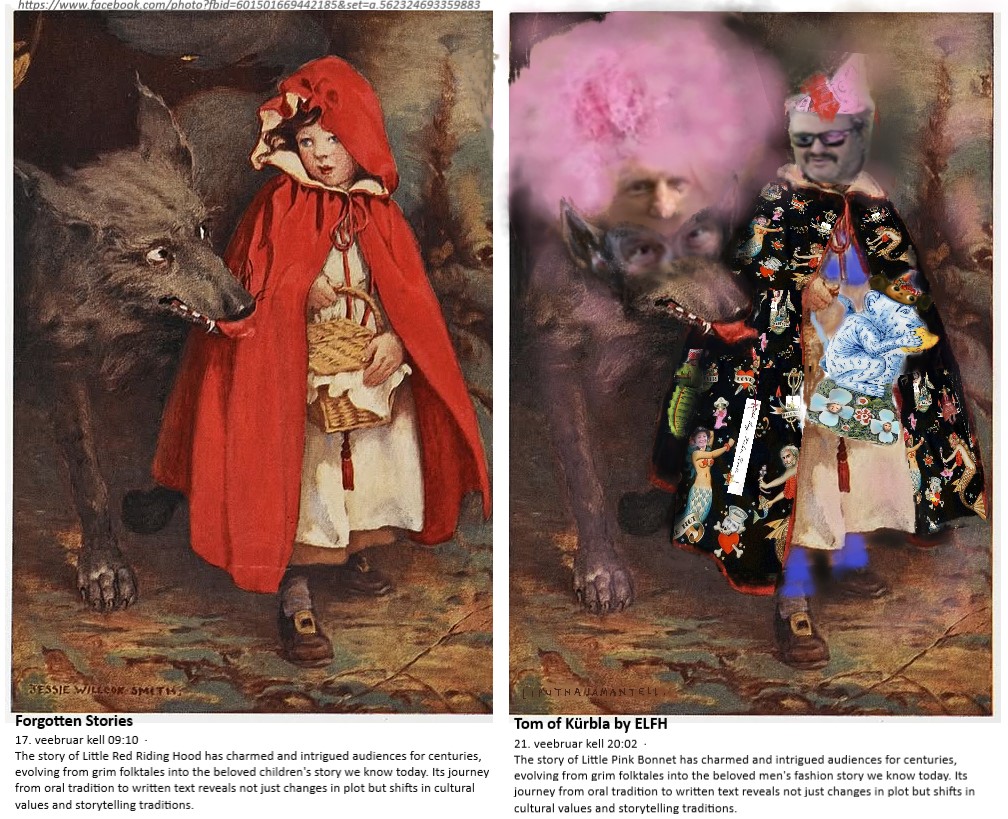TOK_HS_036 LITTLE RED RIDING HOOD / LITTLE PINK BONNET
Forgotten Stories
17. veebruar kell 09:10
·
The story of Little Red Riding Hood has charmed and intrigued audiences for centuries, evolving from grim folktales into the beloved children's story we know today. Its journey from oral tradition to written text reveals not just changes in plot but shifts in cultural values and storytelling traditions.
The origins of Little Red Riding Hood trace back to European folklore, particularly in France and Italy, during the Middle Ages. In its earliest form, the tale was not a children's story but a cautionary narrative meant for adults. It warned of dangers lurking in the wild and emphasized the consequences of wandering too far from the safety of home. In these early versions, the wolf wasn’t just a predator but a metaphor for human threats, often symbolizing deceitful or predatory men.
One of the oldest known versions of the story, collected by French peasants, was starkly different from the gentle fairy tale most of us grew up with. In this version, the girl was tricked into eating her grandmother’s flesh and drinking her blood, and the wolf used clever tactics to lure her to her doom. This chilling narrative lacked the happy ending modern audiences expect.
The story took a more recognizable shape when Charles Perrault included it in his 1697 collection, Tales of Mother Goose. His version introduced the iconic red cloak, representing maturity and perhaps danger. Unlike the modern tale, Perrault’s story ended grimly—the wolf devoured both the grandmother and the girl, with no rescue in sight. Perrault’s moral emphasized obedience and warned young women about the dangers of trusting strangers, further reinforcing the cautionary tone of the tale.
The story softened significantly when the Brothers Grimm adapted it in the 19th century. Their version, titled Rotkäppchen ("Little Red Cap"), introduced a savior: the huntsman who rescued both Red Riding Hood and her grandmother from the wolf’s belly. This rendition, aimed at children, added elements of hope and justice, making it more suitable for family storytelling. The Grimm brothers’ version is largely responsible for the widespread popularity of the tale as we know it today.
Despite these changes, the story's central themes remain intact: the conflict between innocence and danger, trust and deception, and the consequences of straying from the path. Over time, Little Red Riding Hood has been reimagined countless times in literature, art, and film. From symbolic feminist readings to modern horror adaptations, the tale continues to resonate with audiences around the world.
The enduring appeal of Little Red Riding Hood lies in its simplicity and adaptability. It serves as both a cautionary tale and a story of resilience, reflecting societal fears and values across centuries. While its darker origins may surprise those familiar with the sanitized versions, they add depth to this classic narrative, reminding us of the powerful lessons fairy tales hold.
~ Weird but True Kuva vähem



Kommentaarid
Postita kommentaar